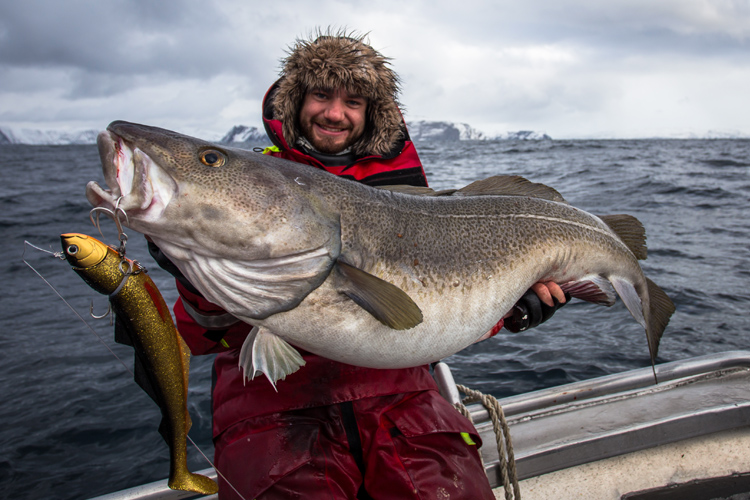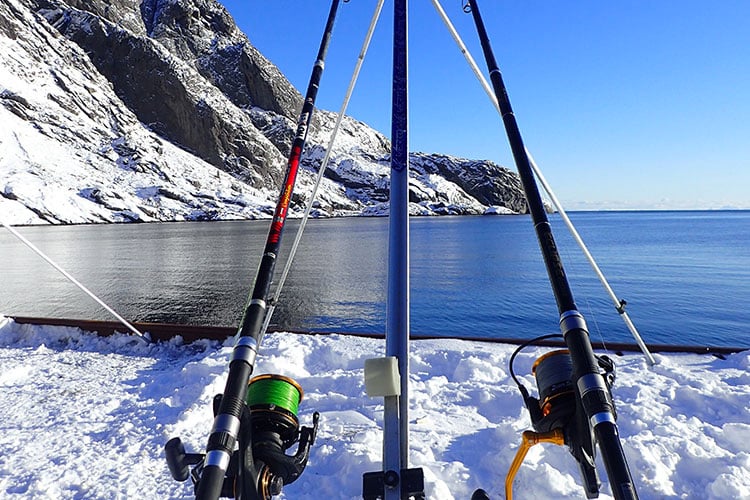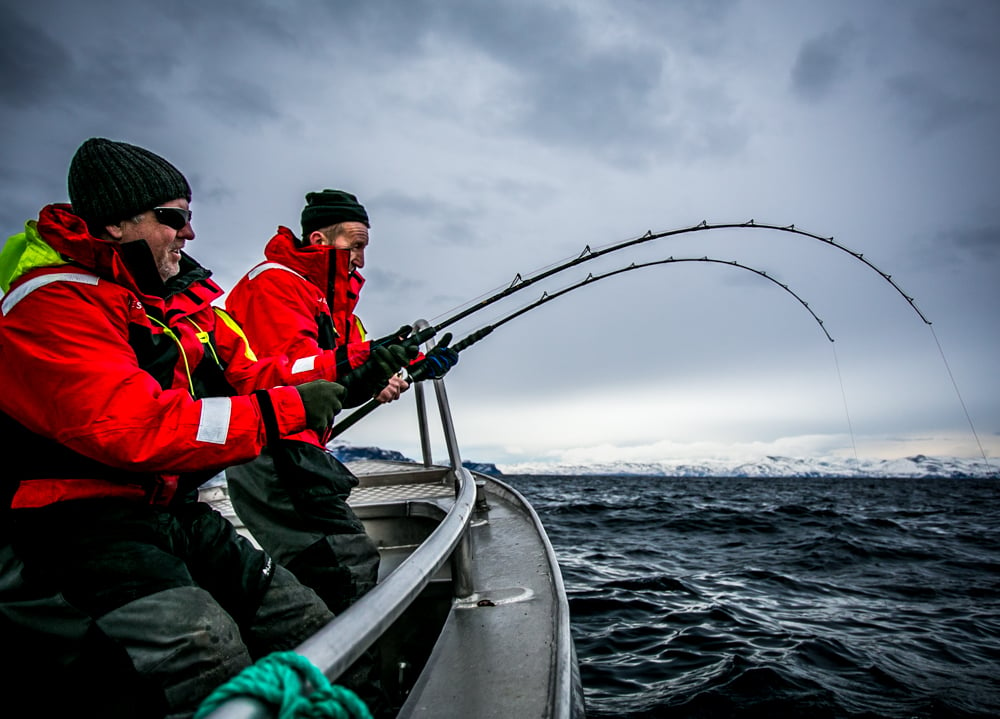The age-old debate in fishing still rages on, what fishing line is best, do you go for the stretchy, forgiving properties of monofilament line or do you go for all-out strength against diameter properties of braided lines. Here I will go through the advantages and disadvantages of using both from boat and shore fishing environments. It really is a Braid vs Mono saltwater battle! Both these types of fishing have different needs but the goal is always ultimately the same, to trick a fish into taking the bait/lure and to get it back to you without losing it through either human error or tackle failure.


Large Cod caught on a shad
The Braid vs Mono Saltwater Battle
Boat Fishing
When fishing from a boat in Norway you are less likely to encounter snags as you will mainly be drifting with either shads/lures or dead baits for the many fish that lurk here. When fishing from the boat I would always recommend using braided mainline, this is due to the fact that there is no stretch in the braid meaning that you are constantly in contact with your bait or lure. If you were to use mono in this situation you would be losing movement in the shad due to the fact that every time you move your rod tip the line stretches and absorbs the movement. This is a very un-efficient way to fish as you will be putting a lot more effort in with mono whereas using braid you would need minimal effort to get that shad moving. However, one huge advantage to mono is that due to the fishing line having some stretch to it, it means that if you have an incorrect drag setting on your spinning reel and hook up with a big fish, then you have much more of a chance of getting the fish in due to the line being able to stretch, allowing you to adjust your drag to the correct amount.
Another plus point when using braid is that you will feel every pluck and tug on the line meaning that every fish that has a go at your shad, pirk or bait will give you a positive indication on the rod tip. Braid is also much thinner than mono when it comes to breaking strain versus diameter meaning that you can fit much more on your reel, with 60lb braid being around .40 which is the equivalent of just 25lb mono. Also, braid is much stronger than mono for if you get snagged on the bottom, there are many times I have seen an angler having an epic battle with a snag and you know that if the angler had been using mono he would have lost his tackle straight away but with the braid, after a bit of manoeuvring in the boat we have managed to get the tackle back with everything intact.


A boat caught Norwegian Cod
Shore Fishing
When fishing from the shore the debate becomes much harder to argue. Fishing from the shore obviously needs a bait to be cast out and many anglers will chat about the difference these 2 types of lines can cause between casting distance achieved and also abrasion resistance. The stretch in mono means that anglers can normally whack a bait out using a stiff rod without the bait being smashed up completely on the cast. Fragile baits such as worms and softer fish will be useless when they hit the water if power-cast without the stretch to take out some of the shock of the cast, this is why many anglers will use a mono leader even with braid to aid in the presentation of bait and to make casting easier. One advantage of braid is that when fishing rocky and rough areas if you use a rotten bottom set up on your weight you will not lose as much tackle as the rotten bottom will break long before the braid will meaning that you will get your tackle back nearly every time.
Bites will also show up much better on braid but the stretch in mono is much better when fishing in big tide runs, this is mainly because the tide pressure will push on the line and create force upon the lead, mono will stretch and absorb this force whereas braid will just pull and something will have to give which is normally the leads stronghold. Another negative for braid is that if you snap off and lose a lot of line the braid will cause a huge line snag in the water meaning that anybody else who fishes this spot will also snag on this and more and more tackle will be lost sometimes making a mark un-fishable. If however, you lose mono this over time will perish and will more than likely break if somebody else hooks into it meaning that less tackle is lost in the area.


Who do you think wins the Braid vs Mono saltwater battle?
Overall I think we can say that for boat fishing braid is much better as it keeps you constantly connected to either your bait or shad whereas from the shore it really depends on personal preference and factors around the mark you are fishing. Personally, I will take out different spools with me loaded with both braid and mono so I can adapt to suit on the marks I am fishing when fishing from the shore. But who do you think wins the Braid vs Mono saltwater battle? Let us know below.
Hopefully, this has been of some help to you and will help you to choose the best mainline for your holiday to Norway and will help you have the best fishing possible. Will the Braid vs Mono saltwater battle ever end?
Tight lines,
Paul
Contact us
If you would like to speak to our sea fishing team leader to discuss any potential upcoming sea fishing trips, you can contact him via 01603 407596 or by email at paul@sportquestholidays.com.
If you would like to see some action from any of our dedicated Norway shore or boat trips, take a closer look at our tailored Youtube channel playlists. Alternatively, you can take a closer look at all of our Norway sea fishing tours here.








